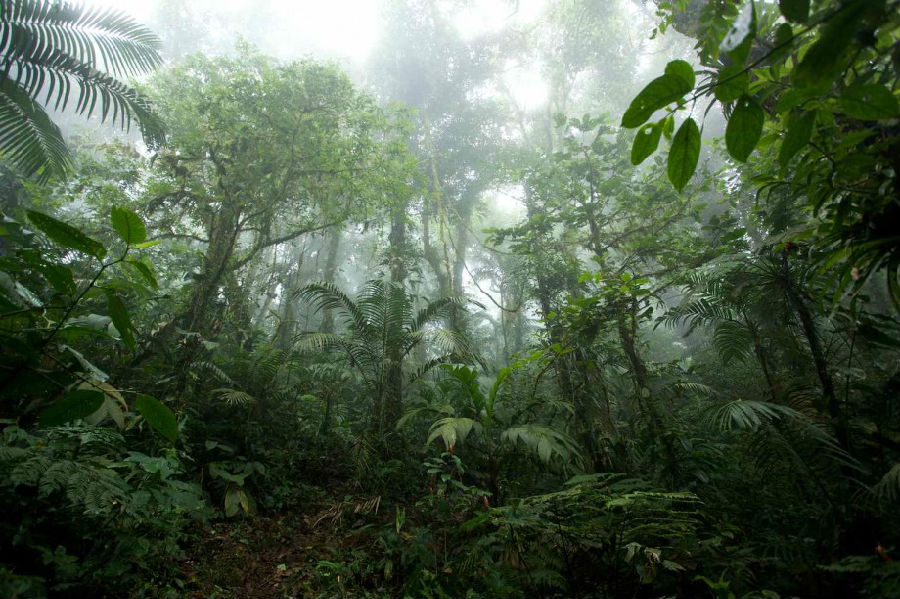We don't look in the right places. In The Diversity of Life, Wilson describes how one botanist spent a few days tramping around ten hectares of jungle in Borneo and discovered a thousand new species of flowering plant — more than are found in the whole of North America. The plants weren't hard to find. It's just that no one had looked there before. Koen Maes of the Kenyan National Museum told me that he went to one cloud forest, as mountaintop forests are known in Kenya, and in a half hour "of not particularly dedicated looking" found four new species of millipedes, three representing new genera, and one new species of tree. "Big tree," he added, and shaped his arms as if about to dance with a very large partner. Cloud forests are found on the tops of plateaus and have sometimes been isolated for millions of years. "They provide the ideal climate for biology and they have hardly been studied," he said.

Overall, tropical rain forests cover only about 6 percent of Earth's surface, but harbor more than half of its animal life and about two-thirds of its flowering plants, and most of this life remains unknown to us because too few researchers spend time in them. Not incidentally, much of this could be quite valuable. At least 99 percent of flowering plants have never been tested for their medicinal properties. Because they can't flee from predators, plants have had to contrive chemical defenses, and so are particularly enriched in intriguing compounds.












